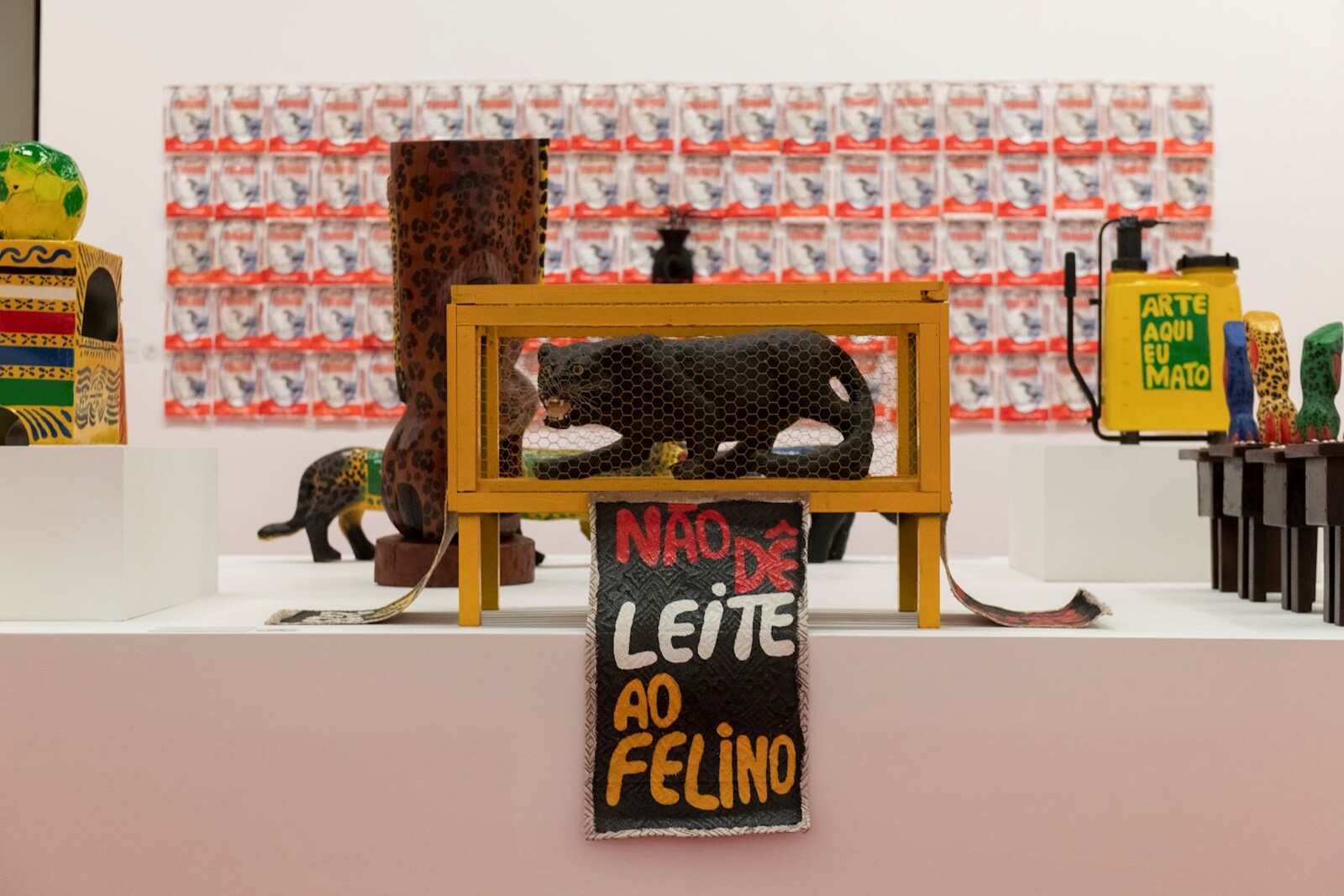Categories
Subjects
Authors
Artists
Venues
Locations
Calendar
Filter
Done
April 24, 2024 – Review
Gervane de Paula’s “como é bom viver em Mato Grosso”
Oliver Basciano

I entered Gervane de Paula’s three-room retrospective by the wrong door, meaning that I saw this chronological survey in reverse order. By the time I came to view the works with which the exhibition is supposed to open—the artist’s earliest paintings, from the 1970s, show sunny scenes of life in his home state of Mato Grosso, in the Central-West Region of Brazil—I was aware of the dark clouds that would gather over his vivid later canvases and Arte Popular-inspired sculptures.
This knowledge of the artist’s development heightened my sensitivity to the uneasy details that creep into even the most bucolic of de Paula’s first works and foreshadow his later career. Barro Araés (1977), for example, makes plain the artist’s deep affection for his local neighborhood in Cuiabá, the capital city of Mato Grosso: in the foreground, children play with kites in front of their single-story homes while, further back, their mothers hang washing on lines strung across the communal grassy ground, the brightly colored clothes matched by the palette of the airborne stick and paper toys. You can almost smell the Sunday pamonha boiling in the food cart a man pushes past the houses. Yet my eyes were drawn to …
December 16, 2021 – Review
“The Machine of the World: Art and Industry in Brazil”
Oliver Basciano

A few days before I visited the Pinacoteca, I witnessed a traffic accident. At a busy intersection in downtown São Paulo—medics and military police already in attendance—a motorcyclist lay on the oily tarmac, his crumpled bike to one side. He was going to survive, it seemed, but his recuperation might take a while. Particularly telling was the fluorescent orange food delivery box abandoned on the ground next to him. The workers’ rights activist group Treta no Trampo has recently been fighting for those working in Brazil’s gig economy, targeting low pay, dangerous working conditions, and contracts that leave those injured at work on the breadline. The tech might now be more advanced, but the fact that worker exploitation is as old as industry was brought home to me by Eugênio Sigaud’s 1944 painting Acidente de trabalho [Work Accident]. Included in the group show “A máquina do mundo” [The machine of the world], this social-realist canvas depicts a man sprawled on the ground of a building site, his fate equally unknown, as colleagues look down from the precarious scaffolding and ropes far above.
Sigaud’s painting is among the oldest squeezed into this 120-year survey of art dealing with Brazilian industrial …
